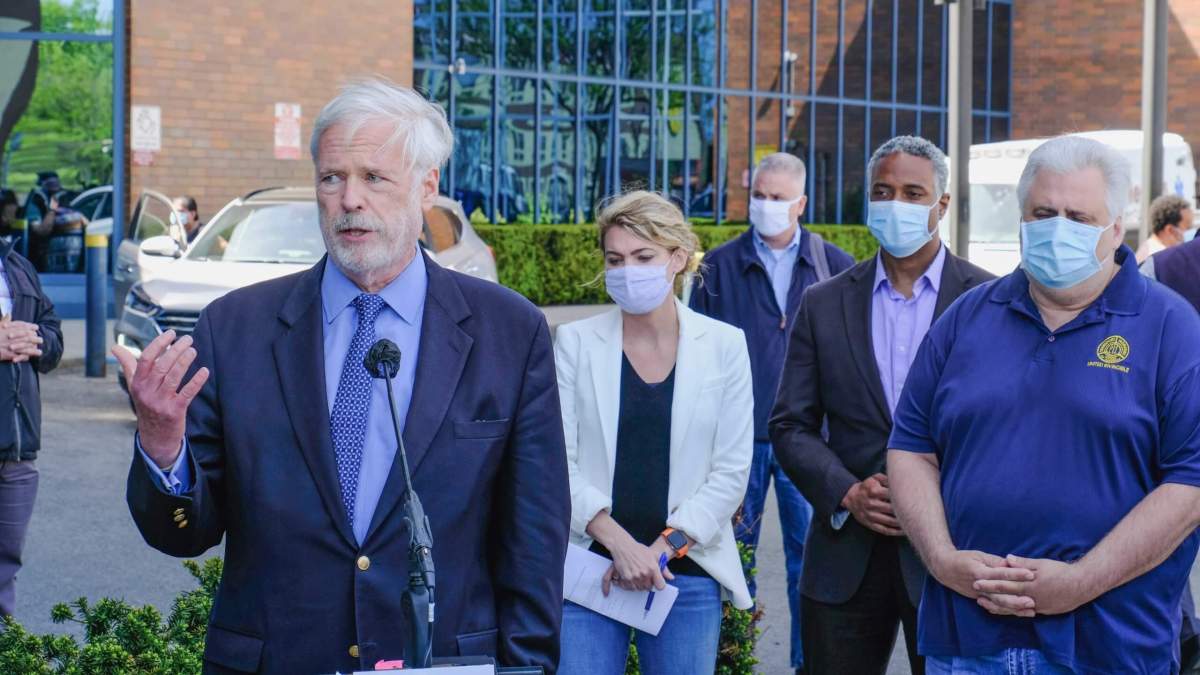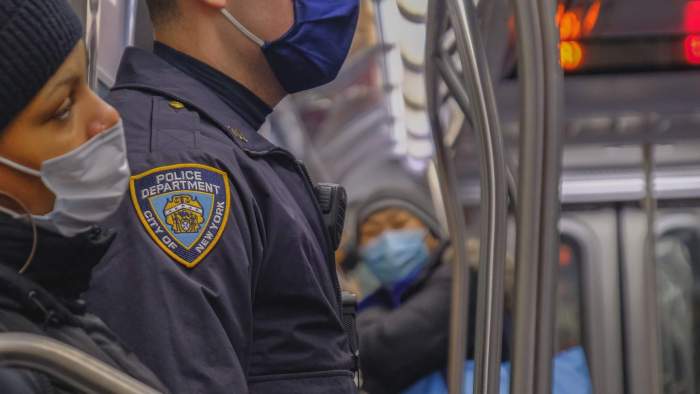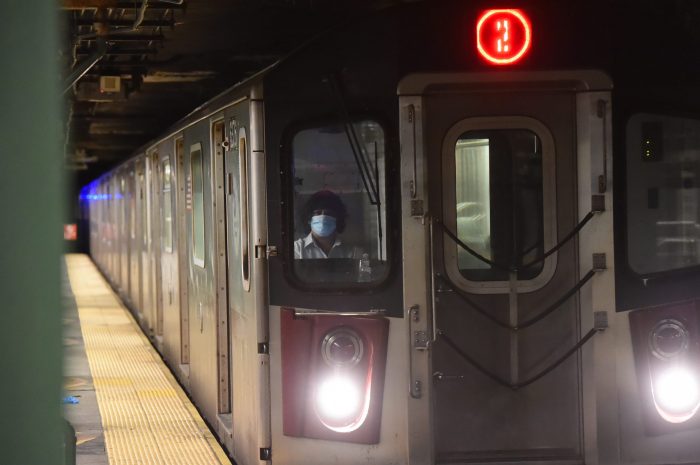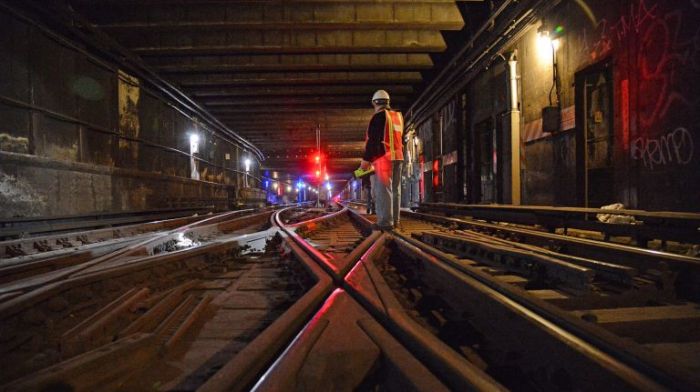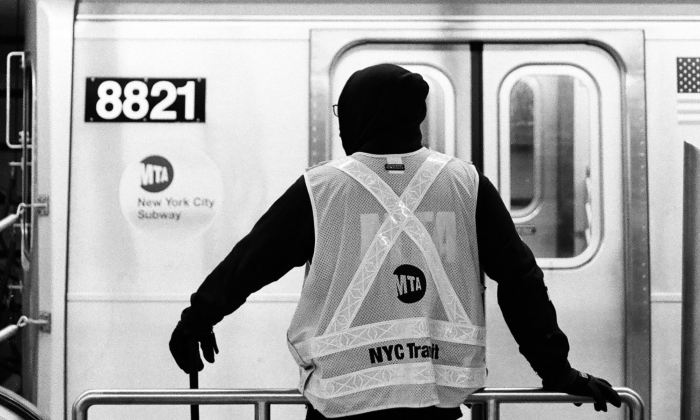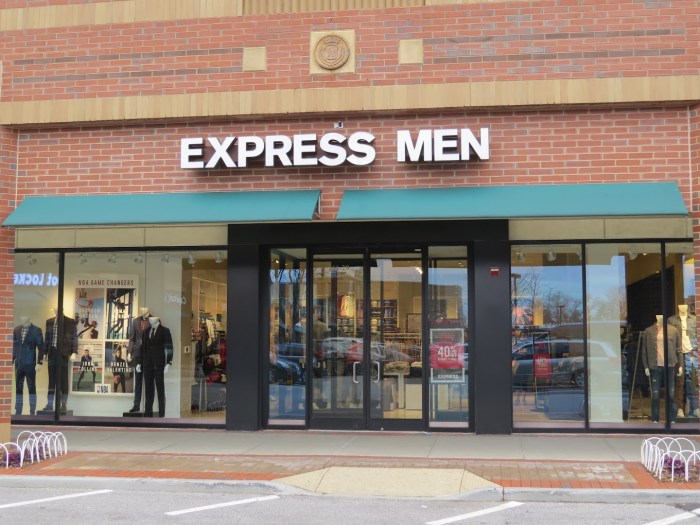As a train conductor remained unconscious Thursday afternoon after being slashed by rider at the Cypress Hills station on the J line, Metropolitan Transportation Authority officials said the incident only bolstered their demand more cops in the transit system.
But after three major events involving emotionally disturbed members of the public causing service disruptions, MTA officials were shocked when Mayor Bill de Blasio suggested at his Thursday morning press conference that police presence has actually softened in recent months.
“First, he seemed to suggest that he may have already pulled out the officers that were surged into the system. Following the tragic stabbings that had happened earlier this year, if that is the case, that is news to us. We did not know that those officers had been pulled out. I think New York City Transit and the MTA deserve an explanation,” interim New York City Transit President Sarah Feinberg said.
Feinberg referred to the 500 police officers that NYPD deployed into the subway stations and trains in February in response to four stabbings targeting homeless people which killed two.
“The MTA isn’t just fearmongering anymore; they’re actively lying to New Yorkers about public safety,” Mitch Schwartz, a spokesman for the mayor, said. “The transit force is thousands strong – hundreds of additional officers have surged to the areas that need it most. It’s truly outrageous to lie to discourage people from using the subways, and it’s time for the MTA and the Governor to stop publicly rooting against New York City’s economic recovery.”
The conductor, Gerard Sykes, is in the surgical intensive care unit at Jamaica Hospital; as of 3 p.m. on Thursday, he was still unconscious and unable to describe the circumstances that led to the attack, which happened just before midnight.
“We cannot stand here and accept additional attacks like the ones that have happened this morning to Mr Sykes and others,” MTA Chairman Pat Foye said. “It will take real action from the city, and that action needs to come as soon as possible. Frankly, the city appears to have defunded the NYPD on the subways and has not made good on the commitments that have been made to increase police resources police resources and mental health resources.”
And it was not the only violent incident that went down in the night in the transit network; a dispute between two men in the Bronx resulted in one being stabbed with an ice pick.
“I don’t know what has happened to my nephew, but, Mr. Mayor, I am saying to you, it is not safe for the transit workers or the public to ride,” said Casandra Sykes, the aunt of Gerard Sykes. “This is not fair, now, this has happened to my nephew and I’m angry as hell. Something needs to be done.”
Sykes has already undergone a number of surgeries to save his life since the attack.
In response to the statement from Schwartz, MTA spokesman Tim Minton issued the following:
“The NYPD released a statement confirming the mayor misspoke this morning when he suggested additional officers that were surged into the subway system following fatal stabbings in February had been taken out. We appreciate the NYPD’s clarification that those officers remain every day — and would like to know the actual number of officers patrolling the system on a regular basis.”
Feinberg believes the ideal number of officers in the subways comes closer to how many total were in the system in the 1990s – about 4,300 across 472 stations as well as trains.
“The NYPD has made clear that they’ll make adjustments whenever needed. The officers that were surged into the subway helped address some real issues, and whenever they have to do that again, they will. But I want to be clear about the overall reality,” de Blasio said in his daily morning press conference. “Go back to before the pandemic, one index crime per million riders is where we were – a level of safety we had never seen before in the history of New York City subways. That’s what the NYPD achieved. And they’re going to continue that progress, especially as people come back.”
The presence of NYPD, as well as MTA Police, in trains as a crime deterrent became the object of debate during the April board meeting in which Transit Chief Kathleen O’Reilly stated that adding more police would not be worthwhile considering the a decrease in crime.
“We just went upstairs and we saw one of our members lying there, and he was all bandaged up on a respirator, all sliced up. And then you have a mayor who says, hey, they’re going overboard. There’s really no problem,” Transport Workers Union Local 100 President Tony Utano said in a press conference in front of the hospital. “There is a problem. There is a problem because the mayor should go and tell the mother of this gentleman and the kids of this gentleman that there is no problem.”
According to the MTA, Sykes is the conductor who was on assignment to be a flagger and was riding the J train as any member of the public would be when the attack happened. While Sykes was conscious when he was admitted to Jamaica Hospital, that was not the case at the time of the press conference.
Wednesday was also difficult for transit workers and riders as a whole as three different incidents involving emotionally disturbed people caused service delays.



